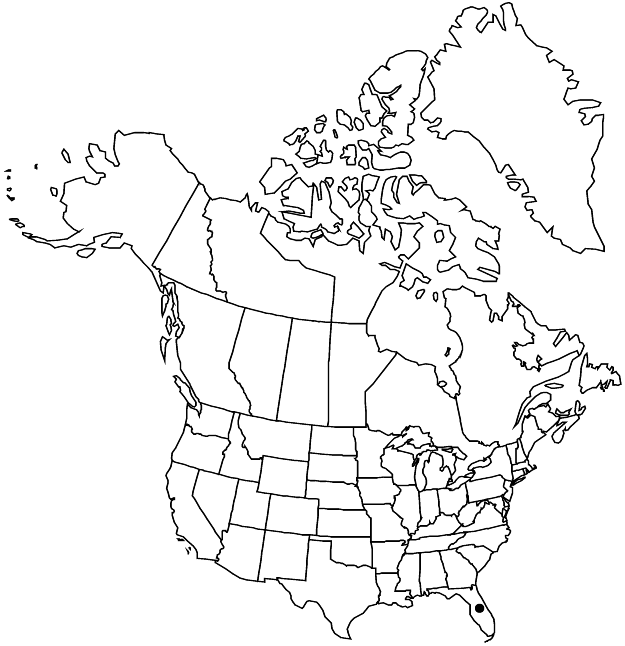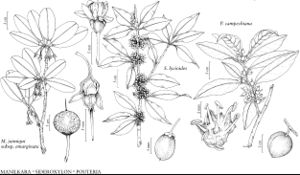Manilkara jaimiqui subsp. emarginata
Bull. Torrey Bot. Club 73: 467. 1946,.
Shrubs or trees, to 10 m. Leaves: petiole 12–25 mm; blade ovate to oblong or oblongelliptic, 50–106 × 30–50 mm, base rounded or truncate, margins sinuate and somewhat revolute, apex retuse (older leaves often split on pressed specimens), surfaces glabrous or sparsely tomentose abaxially, glabrous adaxially. Inflorescences 2–5-flowered, sometimes flowers solitary. Pedicels 10–25 mm, puberulous or glabrous. Flowers: sepals elliptic-lanceolate, 4–8 mm, apex acute to obtuse, tomentose to subglabrate; petals yellow, divided to base into larger median and 2 lateral segments, lobes 6–7 mm, median segment boatshaped, clawed, lateral segments lanceolate to falcate, glabrous, corolla 4–9 mm, tube 1–2 mm (shorter than lobes); staminodes triangular-lanceolate; ovary appressed-puberulous. Berries depressed-globose, 25–40 mm, surface roughened, scaly; pedicels conspicuously enlarged distally. Seeds 3–5, 14–18 mm.
Phenology: Flowering year-round.
Habitat: Hammocks, mangroves, other coastal thickets
Elevation: 0-5 m
Distribution

Fla., West Indies (Bahamas)
Discussion
Subspecies emarginata is known from Collier and Miami-Dade counties and the Monroe County keys. It is listed as threatened by the state of Florida.
Selected References
None.
